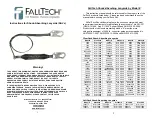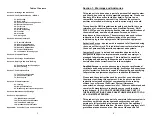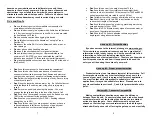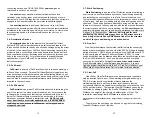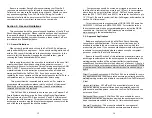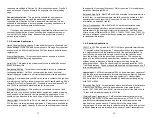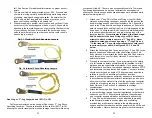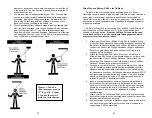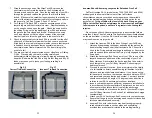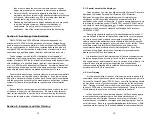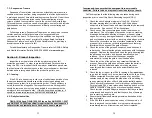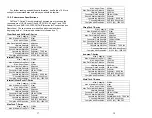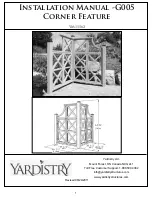
11
connecting devices, see OSHA 1926.502 at www.osha.gov as
referenced in section 1, advisory #1.
A
connector
is any metallic, mechanical element such as a
carabiner, snap hook or rebar hook that physically links one or more
elements of a your PFAS together in a manner such that they will remain
engaged to one another unless they are intentionally disengaged.
A
connecting device
is an element that connects your full body
harness to the anchorage in an effort to ensure that you remain attached
or tethered to the structure upon which you are working. In other words,
the connecting device is that element which secures you to your
anchorage.
2.4: Deceleration Devices
A
deceleration device
is the element of a Personal Fall Arrest
System (PFAS) which is activated during a fall event and reduces the
forces exerted on the user’s body and on the anchorage during the arrest
of the fall. In the case of your
FallTech
Shock-Absorbing Lanyard, this
product is both a connecting device and a deceleration device as it will
keep you attached to your anchorage and will reduce the forces on your
body in the event of a fall. For more details on the capabilities and
specifications of your
FallTech
SAL, please see section 10 of this
instruction manual.
2.5: Fall Arrest
Fall Arrest
is an area of Fall Protection which focuses on stopping a
fall once it has occurred. Personal Fall Arrest Systems typically consist
of an anchorage, a full body harness and a self-retracting lifeline, shock-
absorbing lanyard or other deceleration device designed to bring a falling
user to a stop in the shortest possible distance while limiting the force
imparted to the user’s body.
2.6: Fall Restraint
Fall Restraint
is an area of Fall Protection devoted to restraining the
user of the system in a manner which restricts his or her access to the
fall hazard in a manner such that they cannot be subjected to a fall. A
typical Fall Restraint System consists of an anchorage, a full body
harness or a restraint belt and a restraint lanyard.
An SAL should
never be utilized in a restraint application as it is not capable of
restricting a user’s access to fall hazards, as it may expand or
elongate under load.
12
2.7: Work Positioning
Work Positioning
is an area of Fall Protection devoted to allowing a
user to work on a vertical surface by means of a positioning assembly,
and restricting the user’s exposure to a fall of no more than two feet.
Typical positioning assemblies consist of a large rebar hook and a length
of chain, rope, wire rope or webbing with a double locking snap hook on
either end. These snap hooks are attached to d-rings on the hips or on
the waist of the user’s full body harness, with the rebar hook attached to
the structure upon which the user is working. An SAL should never be
used for work positioning, nor should it ever be attached to a side or hip
d-ring on a full body harness.
However, while rigged for work
positioning, the user should always have an SAL attached to the
back d-ring of their full body harness and tied-off to the structure
on which they are positioning, as a back up device
.
2.8: Free-Fall
Free-Fall is the distance that a worker will fall before the connecting
device or deceleration device elements of the PFAS will begin to engage
during a fall event. OSHA allows a maximum Free-Fall Distance of 6’ (6
feet) when rigging a Personal Fall Arrest System (PFAS). In some
cases, exceptions may be allowed when there is no practical way to limit
the Free-Fall Distance to 6’, such as a job-site where no overhead
anchor-point is available. Tying off in a manner that would create a
Free-Fall greater than 6’ should always be a last resort. If you are
rigging a system that allows more than 6’ of Free-Fall, make sure your
Connecting Device/Deceleration Device is rated for this application.
2.9: Clear-Fall
Clear-Fall or Clear-Fall Distance is the distance that is required to
safely arrest the fall of a user. When working at heights and using a
PFAS, it is important to consider the distance between the
walking/working level and the next lower level to ensure that the
components selected are capable of arresting the user’s fall before they
hit the next lower level. The required Clear-Fall Distance can easily be
calculated by adding together the Free-Fall Distance, the Deceleration
Distance, the height of the user plus a safety factor of 2 feet. The
formula for calculating Clear-Fall Distance is shown below:
Free-Fall Di Deceleration Di Height of Safety Factor = Clear-Fall
Distance
The matrix on the next page can be used as a guide for calculating
Clear-Fall Distance on your job-site:

